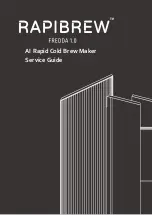
User's Guide MADIface XT
© RME
23
8.3 Multi-client Operation
RME audio interfaces support multi-client operation. Several programs can be used at the same
time. The formats ASIO and WDM can even be used on the same playback channels simulta-
neously. As WDM uses a real-time sample rate conversion (ASIO does not), all active ASIO
software has to use the same sample rate.
However, a better overview is maintained by using the channels exclusively. This is no limitation
at all, because TotalMix allows for any output routing, and therefore a playback of multiple soft-
ware on the same hardware outputs.
Inputs can be used from an unlimited number of WDM and ASIO software at the same time, as
the driver simply sends the data to all applications simultaneously.
RME's sophisticated tool
DIGICheck
is an exception to this rule. It operates like an ASIO host,
using a special technique to access playback channels directly. Therefore DIGICheck is able to
analyse and display playback data from any software, no matter which format it uses.
8.4 Digital Recording
Unlike analog soundcards which produce empty wave files (or noise) when no input signal is
present, digital interfaces always need a valid input signal to start recording.
Taking this into account, RME added a comprehensive I/O signal status display to the MADI-
face XT, showing sample frequency, lock and sync status for every input.
The sample frequency shown in the fields Clock Mode and Input Status is useful as a quick
display of the current configuration of the unit and the connected external equipment. If no
sample frequency is recognized, it will read ‘No Lock’.
This way, configuring any suitable audio application for digital recording is simple. MADIface XT
displays the current sample frequency of the currently used input. This parameter can then be
changed in the application’s audio properties (or similar) dialog.
8.5 Analog Recording
For recordings via the analog inputs the corresponding record device has to be chosen (MADI-
face XT Analog (1+2)).
The level of the front-side analog inputs can be optimized via TotalMix (Input Channel Settings,
Gain), or directly at the MADIface XT by the key MIC/GAIN and the encoders 1/2. Here a signal
and clip LED provide useful information about the current level state.
A further optimization can be achieved by adjusting the source itself. Raise the source’s output
level until the peak level meters in TotalMix reach about –3 dB.
Further information is found in chapter 20.
It often makes sense to monitor the input signal or send it directly to the output. This can be
done at zero latency using
TotalMix
(see chapter 25).
An
automated
control of real-time monitoring can be achieved by Steinberg’s ASIO protocol
with RME’s ASIO drivers and all ASIO 2.0 compatible programs. When 'ASIO Direct Monitoring'
has been switched on, the input signal is routed in real-time to the output whenever a recording
is started (punch-in).
Summary of Contents for MADIface XT
Page 7: ...User s Guide MADIface XT RME 7 User s Guide MADIface XT General...
Page 36: ...36 User s Guide MADIface XT RME...
Page 37: ...User s Guide MADIface XT RME 37 User s Guide MADIface XT Usage and Operation...
Page 44: ...44 User s Guide MADIface XT RME...
Page 45: ...User s Guide MADIface XT RME 45 User s Guide MADIface XT Inputs and Outputs...
Page 53: ...User s Guide MADIface XT RME 53 User s Guide MADIface XT Stand Alone Operation...
Page 56: ...56 User s Guide MADIface XT RME...
Page 57: ...User s Guide MADIface XT RME 57 User s Guide MADIface XT TotalMix FX...
Page 59: ...User s Guide MADIface XT RME 59...
Page 92: ...92 User s Guide MADIface XT RME...
Page 93: ...User s Guide MADIface XT RME 93 User s Guide MADIface XT Technical Reference...
Page 106: ...106 User s Guide MADIface XT RME...
Page 107: ...User s Guide MADIface XT RME 107 User s Guide MADIface XT Miscellaneous...
















































